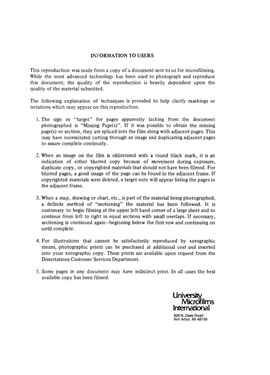| dc.description.abstract | The purpose of this dissertation was to assess the importance of city needs in the allocation of state aid to city governments. While the responsiveness of federal aid to cities has received some attention in the literature, little research has been conducted on the relationship between state aid and city needs. Since states are the governments closest to the cities, their awareness and understanding of city problems was presumed to be better than that of the federal government. For this reason the basic hypothesis of this study was that established programs of state aid would be found to be responsive to the needs of city governments. This hypothesis was tested in a sample that included the 47 largest cities in the U.S. These cities' intergovernmental revenue receipts from state government, in total and by functional area, were analyzed in 1962, 1976, and across the 15-year period. This revenue, or state aid, was studied in relationship to three sets of "need" measures--social, economic, and fiscal--and a group of "non-need" measures that tapped such variables as functional inclusiveness, state revenue capacity, state demographics, and state politics. Due to a strong relationship between city population size and state aid, residual measures for state aid and several population-related independent variables were constructed. The analysis revealed that residual state aid was strongly related to city need in both 1962 and 1976. This was true in the aggregate and across five categories of state aid. Needs were also found to be stronger determinants of state aid in 1976 than they were in 1962 (or the pre-urban crisis period), with highway aid having the reverse true. Although it had been expected that change in residual state aid from 1962 to 1976 would be due to changing needs, this was not found to be true. And while need measures were generally found to be much stronger determinants of residual state aid in both years, the one non-need measure that was also a key determinant of state aid was functional inclusiveness. The general conclusion of this study is that state aid is highly related to city needs. | en_US |
